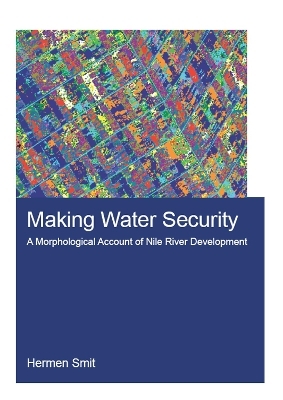
Making Water Security
A Morphological Account of Nile River Development
Seiten
2019
CRC Press (Verlag)
978-0-367-46004-4 (ISBN)
CRC Press (Verlag)
978-0-367-46004-4 (ISBN)
This book examines Nile water security through the morphology of the river: it uses the changing form of the river as a device to map and understand how infrastructures and discourses dynamically interact with the Nile.
This book examines Nile water security through the morphology of the river: it uses the always changing form of the river as a theoretical and empirical device to map and understand how infrastructures and discourses dynamically interact with the Nile. By bringing a history of two centuries of dam development on the Nile in relation with the drainage of a hill slope in Ethiopia on the one hand and irrigation reform in Sudan on the other, the author shows how the scales, units and ‘populations’ figuring in projects to securitize the river emerge through the rearrangement of its water and sediments. The analysis of ‘Making water security’ is more than yet another story of how modern projects of water security have legitimized often violent dispossessions of Nile land and water. It shows how no water user is confined by the roles assigned by project engineers and planners. As ongoing modern ‘development’ of the river reduces the prospects for new large diversions of water, the targeted subjects of development and modernization make use of newly opened spaces to carve out their own projects. They creatively mobilize old irrigation and drainage infrastructures in ways that escape the universal logic of water security.
This book examines Nile water security through the morphology of the river: it uses the always changing form of the river as a theoretical and empirical device to map and understand how infrastructures and discourses dynamically interact with the Nile. By bringing a history of two centuries of dam development on the Nile in relation with the drainage of a hill slope in Ethiopia on the one hand and irrigation reform in Sudan on the other, the author shows how the scales, units and ‘populations’ figuring in projects to securitize the river emerge through the rearrangement of its water and sediments. The analysis of ‘Making water security’ is more than yet another story of how modern projects of water security have legitimized often violent dispossessions of Nile land and water. It shows how no water user is confined by the roles assigned by project engineers and planners. As ongoing modern ‘development’ of the river reduces the prospects for new large diversions of water, the targeted subjects of development and modernization make use of newly opened spaces to carve out their own projects. They creatively mobilize old irrigation and drainage infrastructures in ways that escape the universal logic of water security.
Hermen Smit teaches Water Governance at IHE Delft Institute for Water Education. His work focuses on the making of water infrastructures to understand the politics of water engineering.
Introduction, Materializing water security – two hundred years of modern hydraulic development on the Nile (1817-2017), The political morphology of drainage – how gully formation links to state formation in the Choke Mountains of Ethiopia, Friction along the canal - reforming irrigation infrastructure and water user identities in the Gezira scheme in Sudan, The (re)making of a water accounting culture - entanglements of water science and development in the Waha irrigation scheme of Sudan, Conclusion.
| Erscheinungsdatum | 24.12.2019 |
|---|---|
| Reihe/Serie | IHE Delft PhD Thesis Series |
| Verlagsort | London |
| Sprache | englisch |
| Maße | 170 x 240 mm |
| Gewicht | 362 g |
| Themenwelt | Naturwissenschaften ► Geowissenschaften ► Geologie |
| Naturwissenschaften ► Geowissenschaften ► Hydrologie / Ozeanografie | |
| Technik ► Bauwesen | |
| Technik ► Umwelttechnik / Biotechnologie | |
| ISBN-10 | 0-367-46004-1 / 0367460041 |
| ISBN-13 | 978-0-367-46004-4 / 9780367460044 |
| Zustand | Neuware |
| Informationen gemäß Produktsicherheitsverordnung (GPSR) | |
| Haben Sie eine Frage zum Produkt? |
Mehr entdecken
aus dem Bereich
aus dem Bereich
Baugruben und Gründungen
Buch | Hardcover (2024)
Springer Vieweg (Verlag)
CHF 83,95


